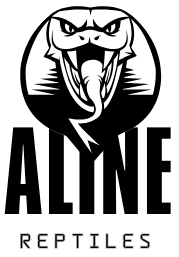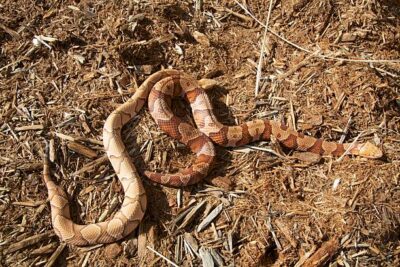Whether you’re out hiking in the woods, tending to your backyard garden, or considering a new reptile pet, the ability to tell the difference between a corn snake vs copperhead can be more important than you think.
These two snakes are often confused due to their similar reddish-brown coloration and patterned bodies. However, mistaking one for the other can lead to unnecessary fear, or worse, unsafe interactions with a venomous snake. In this article, we’ll explore everything you need to know—from appearance to behavior, venom toxicity, and even which one makes a great pet.
Quick Comparison Table
| Feature | Corn Snake | Copperhead |
|---|---|---|
| Venomous | No | Yes (mild venom) |
| Temperament | Docile, non-aggressive | Shy but defensive |
| Head Shape | Rounded | Triangular |
| Pupil Shape | Round | Vertical slit |
| Color Pattern | Saddle-shaped blotches | Hourglass bands |
| Habitat | Fields, barns, forests | Rocky hillsides, wooded areas |
| Legal as Pet | Yes | Illegal or restricted in most areas |
| Role in Ecosystem | Excellent rodent control | Predator and rodent control |
Appearance & Physical Traits
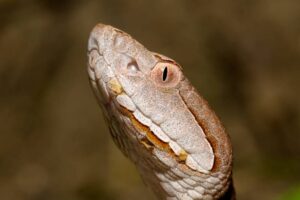
Body Color & Pattern
At first glance, both snakes have earthy tones that can look similar, especially in dim lighting or from a distance. However, on closer inspection, corn snakes usually display bold, saddle-shaped blotches that are deep red or orange, outlined in black, and run along a lighter, often orange or tan, background.
Copperheads, on the other hand, have distinctive hourglass-shaped bands that are wide on the sides and narrow at the spine. These bands are usually coppery, chestnut, or even pinkish, set against a light tan or peach background. If you see a snake with irregular, uneven shapes across its body, it’s likely not a copperhead.
Head Shape & Eye Features
Corn snakes have a more slender, rounded head that blends into the neck, making it less pronounced. Their eyes are large with round pupils—similar to most non-venomous snakes.
Copperheads have a more triangular or arrow-shaped head that stands out from the body. This feature is typical of pit vipers. Their eyes have vertical slit pupils, much like a cat’s, which is another indicator of venomous snakes.
Size & Length
Corn snakes generally grow between 2.5 to 5 feet in length, while copperheads typically range from 2 to 3 feet, though some larger individuals may reach nearly 4 feet. Both are relatively slender, but corn snakes are usually longer and leaner.
Behavior & Temperament
Corn snakes are known for their docile nature, making them one of the most popular pet snakes in North America. They rarely bite, prefer to flee than confront, and tolerate handling quite well.
Copperheads, in contrast, are naturally more defensive. While they are not aggressive by nature and often freeze in place when they sense danger, they will strike if they feel threatened or cornered. Their venom is not considered fatal to healthy adults but can cause significant pain, swelling, and tissue damage.
Habitat & Geographic Range
Geographic Spread
Both snakes are native to the southeastern United States, but their habitats overlap across several states. Understanding where you are can help you assess which snake you might have encountered.
| State | Corn Snake Presence | Copperhead Presence |
| Florida | Yes | Yes |
| Texas | Yes | Yes |
| North Carolina | Yes | Yes |
| Missouri | Yes | Yes |
| New Jersey | Rare | Yes |
Preferred Habitats
Corn snakes prefer open fields, abandoned buildings, forest edges, and farmlands. They’re often found near human habitation, especially in barns or sheds where rodent populations are high.
Copperheads prefer rocky hillsides, forested areas, and dense brush. They are more reclusive and typically stay hidden under leaf litter, logs, or rocks during the day, becoming active during dusk and night.
Venom & Danger to Humans
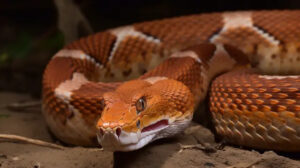
Corn snakes are non-venomous constrictors, meaning they subdue their prey by wrapping around and squeezing it. They pose no threat to humans. Even if a corn snake bites (which is rare), the worst you’ll get is a small scratch.
Copperheads, however, are mildly venomous pit vipers. Their venom is hemotoxic, which means it destroys red blood cells and can cause localized tissue damage. Though not usually life-threatening, a bite can result in:
- Immediate pain and swelling
- Bruising
- Nausea or dizziness
- Possible allergic reaction
First Aid for a Copperhead Bite:
- Stay calm and limit movement
- Keep the bitten limb immobilized and at heart level
- Do NOT apply a tourniquet or attempt to suck out venom
- Get medical help immediately
Role in the Ecosystem
Despite the danger copperheads pose, both species play an important role in balancing the ecosystem.
- Corn snakes help control rodent populations in both wild and human-populated areas. Their presence can reduce the need for chemical pest control.
- Copperheads also hunt small mammals, insects, and even frogs, playing a key part in maintaining biodiversity.
It’s worth noting that copperheads themselves fall prey to hawks, owls, and larger snakes—so they’re not at the top of the food chain.
Can You Keep Them as Pets?
Corn Snake
- Popularity: Among the most common pet snakes due to their calm temperament and manageable size.
- Care Needs:
- Temperature gradient of 75–85°F
- Secure enclosure (they are escape artists!)
- Feed once every 7–10 days (mice or small rats)
- Lifespan: 15–20 years in captivity
- Legal: Legal in most places in the U.S.
Copperhead
- Suitability: Not recommended for private ownership.
- Care Risks:
- Requires venom handling expertise
- Potentially dangerous to owners and household members
- Legal Status: Illegal or heavily restricted in most states due to the risk they pose
How to Tell the Difference (With Visual Cues)
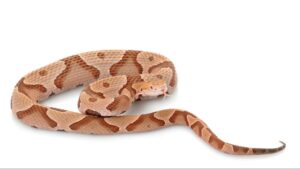
Let’s simplify the ID process. If you spot a snake and want to know whether it’s a corn snake or a copperhead, here are some tips:
| Feature | Corn Snake | Copperhead |
| Body Markings | Saddle-shaped red or orange blotches | Hourglass-shaped brown bands |
| Head Shape | Rounded and blends into body | Triangular with distinct neck |
| Eyes | Round pupils | Vertical slit pupils |
| Belly | Checkerboard pattern (black/white) | Plain or slightly patterned |
| Reaction | Flees when approached | Freezes or strikes when provoked |
What to Do If You Encounter One
- Stay Calm – Sudden movements can provoke a snake.
- Don’t Try to Handle It – Unless you’re a trained professional, don’t touch it.
- Observe from a Safe Distance – Take a picture for ID, if safe to do so.
- Leave It Alone – Snakes usually move on when not threatened.
- Call Wildlife Services – Especially if the snake is in a high-traffic area or near pets/kids.
Myths & Misconceptions
- “If it’s colorful, it’s venomous.” Not true—corn snakes are vivid but harmless.
- “All snakes are dangerous.” In fact, most snakes in the U.S. are non-venomous.
- “Copperheads chase people.” This is a myth. They are defensive, not aggressive.
- “Kill all snakes.” Snakes are vital for the ecosystem and shouldn’t be harmed unnecessarily.
Conclusion
Understanding the difference between a corn snake vs copperhead can help you stay safe, reduce fear, and appreciate the role these reptiles play in nature. Corn snakes are harmless, beneficial, and even make excellent pets. Copperheads, while venomous, are not aggressive unless provoked and usually prefer to avoid confrontation.
Knowing how to identify and respond appropriately to each species ensures both human and snake stay safe. Whether you’re outdoors or considering a pet reptile, knowledge truly is the best tool you can carry.
